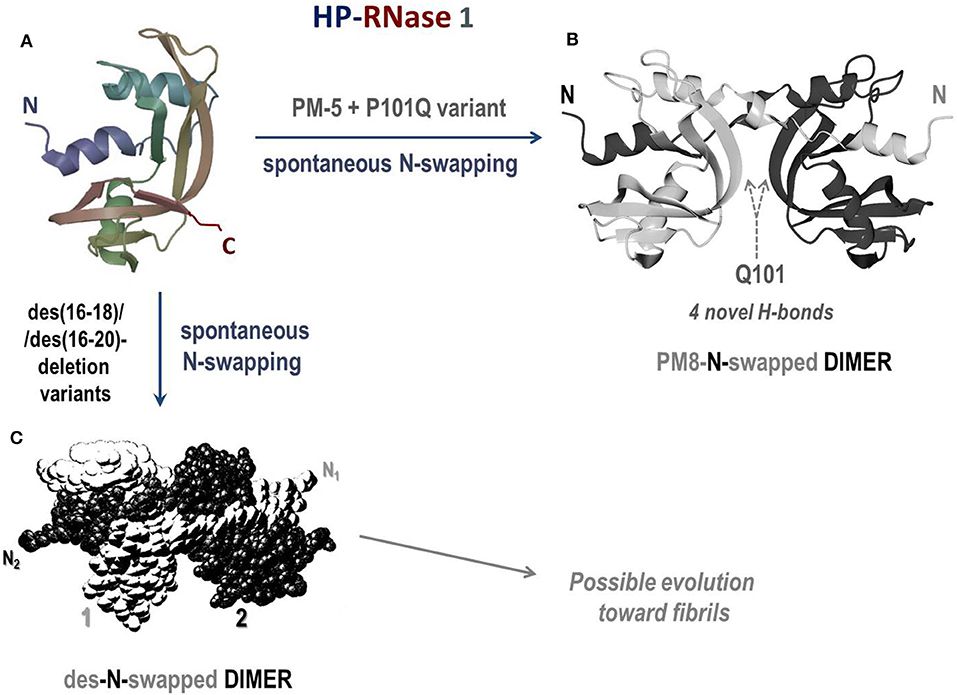What is RNASE1 Protein
RNASE1, a pivotal member of the Ribonuclease A superfamily, holds paramount importance in molecular biology.
What is RNASE1 Protein?
RNASE1, formally known as Ribonuclease A Family Member 1, is a ribonuclease enzyme that plays a central role in RNA degradation. Composed of 124 amino acids, RNASE1 boasts a well-defined three-dimensional structure, emphasizing its enzymatic nature. Primarily expressed in the pancreas, it is secreted into the digestive tract to facilitate the digestion of dietary RNA.
The Structure of RNASE1 Protein
At its core, RNASE1's structure is characterized by 124 amino acids arranged in a unique three-dimensional conformation. The active site, equipped with catalytic residues, enables the cleavage of RNA molecules, underscoring its role as an RNA-degrading enzyme.
The Function of RNASE1 Protein
RNASE1's primary function lies in the cleavage of RNA molecules, specifically targeting phosphodiester bonds. Beyond aiding in the digestion of dietary RNA in the digestive system, RNASE1 contributes to the regulation of gene expression by influencing RNA turnover. This multifaceted functionality underscores its role in maintaining cellular homeostasis.
RNASE1-Related Diseases
Alterations in RNASE1 levels are implicated in various diseases, with pancreatic cancer being a notable example. In pancreatic cancer, the downregulation of RNASE1 expression contributes to the accumulation of RNA molecules that support cancer cell survival and proliferation. Additionally, autoimmune diseases like systemic lupus erythematosus (SLE) exhibit dysregulated RNASE1 expression, linking it to self-RNA accumulation and autoimmune responses.
RNASE1 Related Signaling Pathways
The signaling pathways associated with RNASE1 are complex and interconnected, with the PI3K/AKT/mTOR pathway emerging as a key player. RNASE1's modulation of this pathway influences cellular responses to growth factors and nutrient availability, providing insights into its role in cancer progression. The Toll-like receptor (TLR) pathway also intersects with RNASE1, impacting the immune response and implicating the protein in autoimmune diseases.

Figure 1. Structures of the human pancreatic RNase 1 and of the dimers of two of its mutants. (Gotte, G., et al. 2019)
Applications of RNASE1 in Biomedical Research
- Diagnostic Applications
Cancer Biomarker: RNASE1's altered levels in certain cancers make it a potential biomarker for diagnostic purposes. Monitoring RNASE1 expression in bodily fluids may aid in early cancer detection.
Autoimmune Disease Marker: Dysregulation of RNASE1 in autoimmune diseases positions it as a potential diagnostic marker, contributing to accurate diagnoses of conditions like SLE.
- Therapeutic Applications
Cancer Therapy: Modulating RNASE1 expression presents a potential strategy for cancer therapy. Enhancing RNASE1 levels may promote the degradation of RNA molecules crucial for cancer cell survival.
Autoimmune Disease Treatment: Targeting RNASE1 pathways could be explored as a therapeutic avenue for autoimmune diseases. Restoring normal RNASE1 function may mitigate self-RNA accumulation and the subsequent immune response.
- Biotechnological Tools
RNA Degradation: RNASE1's potent RNA-cleaving activity positions it as a valuable tool in molecular biology for targeted RNA degradation, with applications in gene expression studies and RNA interference experiments.
Drug Delivery: Conjugating RNASE1 to nanoparticles for targeted drug delivery leverages its RNA-cleaving activity, enhancing treatment efficacy while minimizing side effects.
RNASE1's intricate structure, diverse functions, and associations with diseases and signal pathways make it a focal point of interest in molecular biology. The ongoing exploration of RNASE1's applications in diagnostics, therapeutics, and biotechnological tools holds promise for advancing biomedical research and clinical practices. The unraveling of RNASE1's complexities not only enhances our understanding of fundamental biological processes but also opens avenues for innovative approaches in medical science.
Recommended Products for RNASE1 Protein
| Cat.# | Species | Product name | Source (Host) | Tag |
|---|---|---|---|---|
| RNASE1-7682H | Human | Recombinant Human RNASE1, His-tagged | HEK293 | His |
| RNASE1-394H | Human | Recombinant Human RNASE1 Protein, His-tagged | E.coli | His |
| RNASE1-8588H | Human | Active Recombinant Human RNASE1, His-tagged | HEK293 | His |
| RNASE1-2322H | Human | Recombinant Human RNASE1, GST-tagged | E.coli | GST |
| RNASE1-1344H | Human | Recombinant Human RNASE1 Protein, MYC/DDK-tagged | HEK293 | Myc/DDK |
| RNASE1-1893H | Human | Recombinant Human RNASE1 Protein, His (Fc)-Avi-tagged | HEK293 | His (Fc)-Avi |
| Rnase1-395M | Mouse | Recombinant Mouse Rnase1 Protein, His/GST-tagged | E.coli | His/GST |
| Rnase1-396R | Rat | Recombinant Rat Rnase1 Protein, His/GST-tagged | E.coli | His/GST |
| RNASE1-393C | Cattle | Recombinant Cattle RNASE1 Protein, His-tagged | E.coli | His |
| RNASE1-3909R | Rhesus Macaque | Recombinant Rhesus monkey RNASE1 Protein, His-tagged | Mammalian Cell | His |
Reference
- Gotte, G., Menegazzi, M. Biological Activities of Secretory RNases: Focus on Their Oligomerization to Design Antitumor Drugs. Front Immunol. 2019, 10: 2626.

